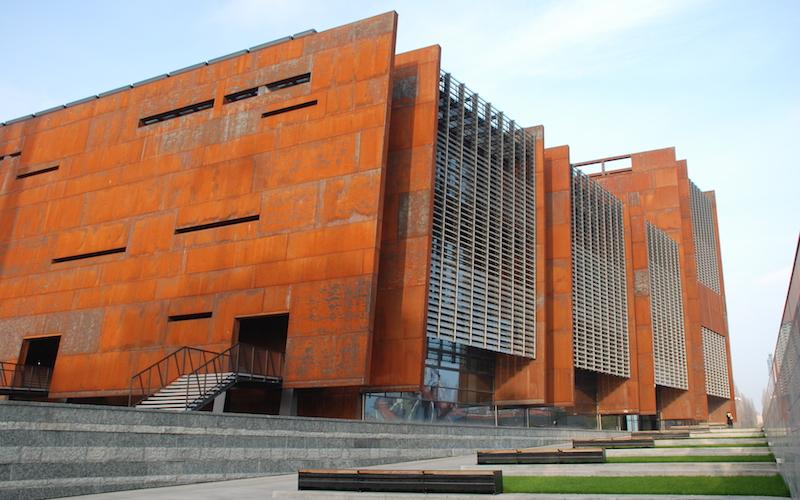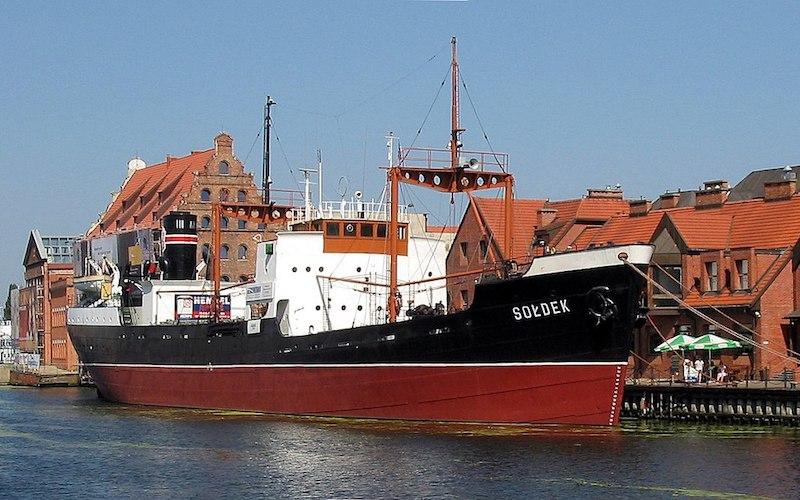Gdansk is a fantastic place for cultural and educational visits. There are some amazing things to do in Gdansk including excellent museums. Sometimes the places that house them are just as interesting as what is kept inside! Here are my favourite museums in Gdansk.
My Favourite Museums in Gdansk
The Solidarity Centre
The Gdańsk shipyard was the setting for a major turning point in European history, now reminisced in lovely detail in the city’s incredible European Solidarity Centre, which is devoted to the Solidarity (‘Solidarność’) movement during the 1980’s. This Trade Union movement originally led by Lech Wałęsa grew to a membership of 10 million and planted the seeds for a new future, being essential in the fall of Communist rule.

You can actually visit the Solidarity Centre which is a museum about the movement. The solidarity centre itself is free to get in although Museum exhibitions are not. Inside the museum exhibitions you will find media footage and photographs that document how the trade union movement led the communist bloc countries down a road to freedom.
Opening Hours: 10am-5pm (closed Tuesdays)
Price: 20 PLN (Concession 15)
Time needed: 2-3 hours
The National Museum
The Old Gothic Franciscan monastery is home to the National Museum of Gdansk and has been used to house exhibits since the end of the 19th century. Around 60% of the monastery was destroyed in WW2 but it has been renovated beautifully. The museum has several departments including ancient art, modern art and an ethnography department.
One of the most famous paintings is The Last Judgement by German artist Hans Memling. In Polish, the painting is identified as Sąd Ostateczny and is a beautiful triptych representing heaven, hell and earth.
Opening Hours: 10-5pm Tuesday to Sunday (summer)
Price: 10 PLN/6 PLN
Time needed: 2-3 hours
Westerplatte Outside Museum
Head to Westerplatte for one of the most interesting outdoor museums in Gdansk – the place where WW2 started. You can get there by taxi (I recommend that you use Uber) or take the 106 bus from the old town.
On Westerplatte you will find a bombed out old fort, an old Garrison (supported so that you can now go inside) and a cemetery for some of the soldiers. There are information boards that tell you the history of the buildings and monuments of Westerplatte. You will also see the main Westerplatte monument which was built in memory of those who fought during the first few shots of WW2.
Opening Hours: Always open but best to see in daylight hours.
Price: Free
Time needed: 2 hours
Polish Post Office Museum
The Polish Post Office in the free city of Danzig was created in 1920 and in operation until the start of WW2 when it was invaded by the Nazis. By the end of the war it was almost completely destroyed, but it was reconstructed between 1949 and 1951. It is still a functioning post office which also houses a small museum dedicated to the events of September 1, 1939 and an exhibition of local postal history from the 18th century to the outbreak of WWII.
Outside of the Post Office Museum you will see a monument dedicated to those who defended it in the outbreak of WW2.
Website: www.muzeumgdansk.pl
Price: 8/4zł. Tue free.
Time needed: 1 hour
Museum of Archeology (Muzeum Archeologiczne w Gdansku)
Located on Mariacka 25/26 is one of the largest and the most representative tenement houses in Gdańsk – known as the Naturalists House – which house the museum of Archaeology. The tenement house itself was probably built between 1597 and 1599 and was originally a storage house on the Motlawa River. The house was badly destroyed during WW2 and was reconstructed and set to become ‘Muzeum Archeologiczne w Gdansku’. Today it holds a fantastic collection of exhibitions dedicated to the pre-history of Pomerania. Other interesting exhibitions include With Amber through the Millennia and Illnesses of the prehistoric people in Poland. If you are interested in ancient Nubia, check out The secrets of the Nile Valley. Sudan.
Opening hours: 8am-4pm Tuesday-Fri and 10am-4pm weekends
Price: 8/6zł. Tower 5zł. Family ticket 15zł. Sat free for permanent exhibition. Guided tour 60zł.
Time needed: 1-2 hours
Soldeck Ship – National Maritime Museum
The National Maritime Museum in Gdansk is actually on board the SS Soldeck ship, and the museum aims to preserve the history and traditions of seafaring and ship building. It’s a good idea to combine this with the granaries of Olowianka. To get there, you can jump on the Motlawa ferry that leaves from near the Crane every 15 minutes.

Opening hours: Tuesday, Thursday and Sunday 10am-4pm and Wednesday 10-1pm.
Price: Granaries, museum ship “Sołdek”, Crane + ferry
Regular – 25 PLN
Discount – 16 PLN
Time needed: 1-2 hours
WW2 Museum
Top of my list of museums in Gdansk is the World War 2 museum – a massive 18 exhibitions in a museum so large that they built it underground. It contains a life sized tank and spitfire along with several interesting exhibitions about the history of Gdansk as Danzig, WW2 weapons and the Holocaust. As well as documents, clothing and artefacts, many of the exhibits display video footage from the second world war. I spent almost 4 hours in there and it wasn’t enough. I know someone who spent 2 days in this museum!
If you are spending time in Gdansk, you might also like to read my articles about Gdansk Nightlife and my favourite Gdansk Restaurants.
